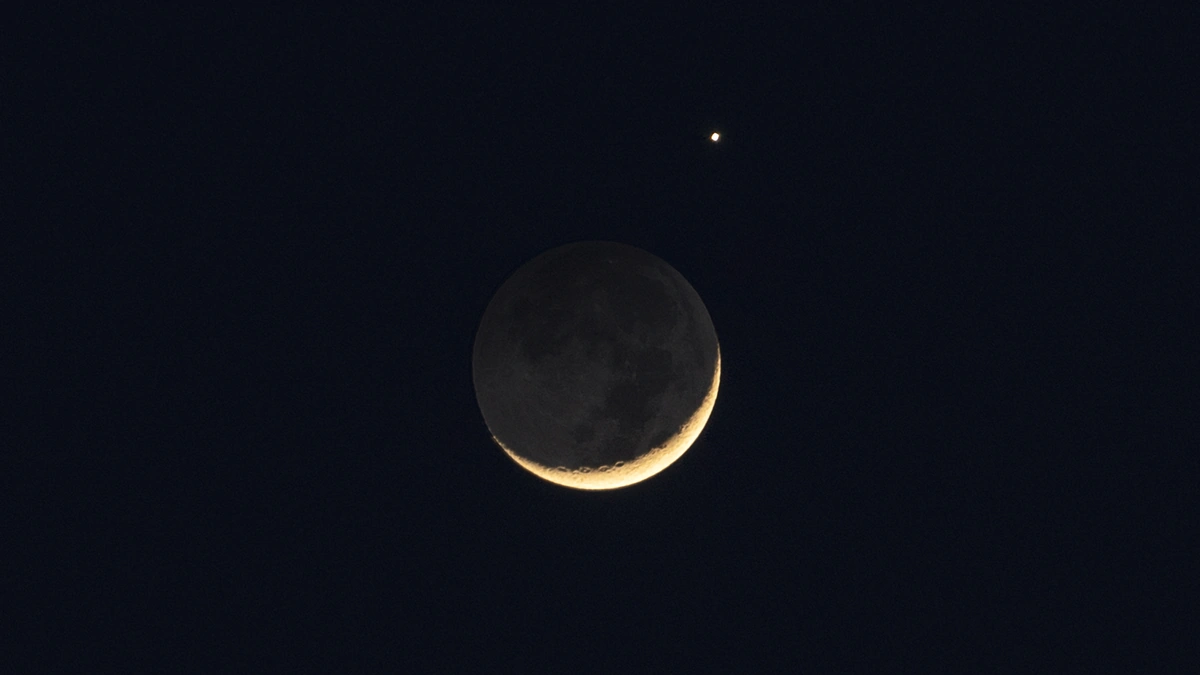Okay, let’s be honest, when you hear about the moon and Venus getting cozy in the sky, your first thought might be, “Cute!” and then you scroll on. But trust me, there’s so much more to this celestial dance than meets the eye. It’s not just about pretty pictures for Instagram; it’s about understanding our place in the cosmos, spotting rare events, and maybe, just maybe, feeling a little bit connected to something bigger than ourselves.
Why This ‘Kiss’ Matters | A Cosmic Perspective

So, why should you care about a Venus conjunction ? Well, for starters, it’s a reminder that the universe is constantly in motion. These apparent close encounters aren’t actual collisions (thank goodness!), but rather perspective tricks. As Earth orbits the Sun, we see other planets seemingly pass each other in the sky. It’s like watching cars on a highway – sometimes they appear to merge, even though they’re miles apart.
But, and this is a big but, these conjunctions have been observed and interpreted for millennia. Ancient cultures saw them as omens, linking planetary movements to earthly events. While we now understand the science behind it all, there’s still something undeniably awe-inspiring about witnessing a celestial alignment. It connects us to the past, to the people who looked up at the same sky and wondered.
How to Spot the Moon and Venus Together | Your Stargazing Guide
Want to see this celestial spectacle for yourself? Here’s the thing: you don’t need a fancy telescope! Venus’s brightness makes it easily visible to the naked eye, especially when it’s near the Moon. A common mistake I see people make is not knowing when to look. Check an astronomy website or app (like Stellarium or SkyView Lite) for the exact dates and times of the conjunction in your location. They will help you determine when planetary alignments are at their peak.
Here’s a quick step-by-step guide:
- Find a spot with a clear view of the western horizon. Buildings and trees can be a real buzzkill.
- Look west shortly after sunset. Venus will be the brightest “star” in that area of the sky. It’s hard to miss – I promise.
- The Moon will be nearby, either a crescent or a sliver, depending on the lunar phase.
- Enjoy the view! Take a moment to appreciate the sheer scale of the universe and your place within it.
And remember: patience is key. Light pollution can make it tricky, so head away from city lights if possible. Even binoculars can enhance the view, revealing more detail on the lunar surface. You can even try taking photographs of the celestial event . If this event has already occurred, learn more about the next full moon.
Beyond the Pretty Picture | The Science of Apparent Proximity
Let me rephrase that for clarity: A conjunction is when two celestial objects appear close together in the sky as viewed from Earth. It’s an optical illusion, not a physical meeting. The planets visibility is merely our line of sight from Earth.
What fascinates me is the mathematics involved. Astronomers use angles and coordinates to predict these events with incredible accuracy. It’s a testament to human ingenuity and our ability to understand the laws of physics that govern the cosmos. The positions and lunar cycle are all interconnected.
The Emotional Connection | Why Stargazing Matters
That moment of calm when you look up at the night sky – we’ve all been there. It’s a feeling of awe, wonder, and connection. Stargazing isn’t just about identifying constellations; it’s about contemplating our place in the universe. When you see the Moon and Venus hanging out together, it’s a reminder that we’re all part of something much larger than ourselves.
Let’s be honest, life can be stressful. But taking a few minutes to gaze at the stars can put things into perspective. It’s a chance to disconnect from the daily grind and reconnect with the natural world. Plus, it’s free entertainment! Just find a dark spot, look up, and let your mind wander.
FAQ | Moon and Venus Conjunctions
What is a conjunction, exactly?
A conjunction is when two celestial objects appear close together in the sky as seen from Earth. It’s a trick of perspective, not a physical collision.
How often do the Moon and Venus appear close together?
The Moon and Venus have several conjunctions each year, due to their orbits. The exact frequency varies depending on the alignment of their paths.
Do I need a telescope to see it?
Nope! Venus is bright enough to be seen with the naked eye. Binoculars can enhance the view, but they’re not necessary.
What if I miss the conjunction?
No worries! These events happen fairly regularly. Check an astronomy website or app for future dates.
Is there any significance to this event in astrology?
Some astrologers believe that conjunctions have specific meanings, but these interpretations are not based on scientific evidence.
While sources suggest specific interpretations in astrology, always rely on scientific sources. It’s best to keep checking verifiable science.
Here’s the thing: The next time you see the moon and Venus together, take a moment to appreciate the beauty and wonder of the cosmos. It’s a reminder that we’re all connected, not just to each other, but to the vast universe that surrounds us. It’s a spectacle of planetary positions that provides great meaning.




